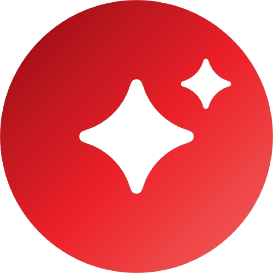What's in a Dashboard?

Understanding the importance of CIO Dashboards
I was just a few weeks into the CIO role when I got a call from the CFO, “I need an IT compliance report for the board meeting”, he asked.
This was ten years ago, and the number of tools available were much less than today. I quickly went to my IT manager responsible for infrastructure, who then called the system engineer accountable for Patching and Antivirus, and the system engineer called SCCM administrator and AV Administrator. They logged into the SCCM and AV management consoles to pull the report and compile them.
AV and Patching are just two KPIs. To compile a comprehensive report, logging into several tools is required, such as, identifying end-of-life (EoL) hardware and software that needs to be generated from an asset management tool. Similarly, different tools are required for measuring “availability” and “vulnerabilities”.
So whenever there is a need for a compliance report, depending on the scale of the enterprise and the number of tools in place, several people get involved in collecting and compiling the information. These reports are point in time, and things could change significantly before it gets presented.
This gets very complicated when the CIO needs to know other KPIs, like, the performance of each service line offered to its business users. This is where having all the KPIs in one place and near real-time can save much time for the CIO and his team by giving an accurate view of his IT performance at a glance.
Visibility and How to Build a Dashboard
A CIO dashboard brings fragmented data from different tools to provide a unified view of all the details of an organization’s information technology systems and programs. It shows all critical metrics and key performance indicators (KPIs) on a single pane, making it easier for a CIO to track and monitor the performance of the enterprise with:
- Access to near real-time performance and compliance data
- Actionable insights to take appropriate action
- View to predict future performance
The CIO dashboard is a great enabling tool for the CIO to help condense unending tracts of information into intelligible bites of insights and provide the big picture of the entire IT estate in a single view.
Connecting and collecting data from all the critical systems using business intelligence tools, such as, Qlik View, Microsoft Power BI, and other similar tools is one way to achieve it. Building connectors to every IT ecosystem tool, pulling out the relevant data point, and applying the correct formulas are required to generate the dashboard view. There are over 500 KPIs that are frequently used in IT. It requires an enormous amount of effort. However, it is worth the effort / investment as the dashboard also has more significant effects on the organization.
Here are some other advantages of using a CIO dashboard in an organization:
Making Information Visible and Legible
A CIO dashboard provides all the key metrics critical to an organization in a single view, making it easier to find and communicate important information across the organization. With the help of a quick scan, a dashboard allows the CIO to check the status of the entire organization and identify and spot any anomalies or critical issues.
Trend Analysis
To improve its performance, an organization must constantly evaluate and measure itself against past data points. However, with a virtually unlimited amount of data generated every second, it is essential to have a CIO dashboard that can collect a vast amount of data and represent them timeline-wise.
A dashboard makes it easy for CIOs to compare the current state of IT to a previous period. This enables CIOs to find hidden correlations and relationships that would go unnoticed with conventional approaches such as an Excel spreadsheet.
Real-time Updates
In an organization, some data and updates are time-sensitive and require quick action for maximum effectiveness. Since CIOs deal with one of the most critical aspects of an organization, they need tools to help react to problems in real-time and resolve issues without delay.
A CIO dashboard allows IT professionals to send real-time updates automatically. Using a dashboard, CIOs can act on the data received in real-time, saving time and resources for an organization.
Improving Organizational Efficiency with the Intelligeni Insights CIO Dashboard
Visibility and ease of access are two key factors that affect the productivity of CIOs. Without the access to the right set of tools, growth can be stunted, and the organization could witness loss in terms of time, money and efficiency.
This is where Microland helps organizations gain an edge. Microland’s Intelligeni Insights offers an industry-leading CIO dashboard to empower CIOs and help them take their organization to peak efficiency. The Intelligeni Insights dashboard puts all the necessary tools and latest technology in the hands of the users, enabling users to get complete access to information from across the organization.
Contact us today to learn more about how Intelligeni Insights can help your organization!


















